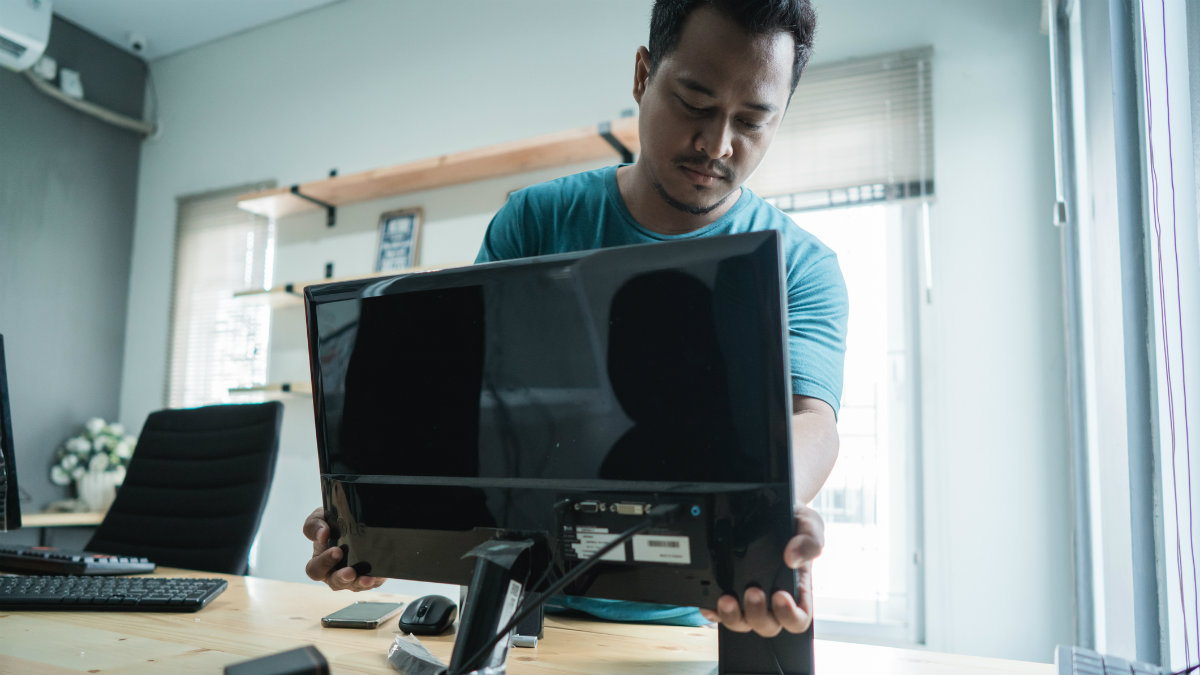Picking out a new computer can be tough. With so many features to choose from, it’s easy to feel overwhelmed. Don’t worry, just click here for a list of the things you should look into before choosing your next computer.
Once you’ve purchased your new PC, what’s the first thing you should do? Yes, you’re correct, you should obviously remove it from its outer packaging and charge it up, but what should your first move be afterward?
Don’t fall into the same pitfalls others do when they start using their brand-new machines. Start off on the right foot with these simple steps and you’ll be able to enjoy your new piece of tech for years to come — as long as you take care of it, anyway.
1. Backup and transfer your data from your old machine, then wipe it clean
Moving all of your old files to your new computer may seem like a frustrating task, but it can be a breeze. Modern file transfer methods simply require that you have either a USB flash drive or an external hard drive handy to complete the process, regardless of whether you have a PC or Mac.
If you decide to go the hardware route, you’ll use hard drives and wait around for files to migrate over from one computer to the other.
For numerous larger files, the hard drive is the best route, but you could also rely on a transfer cable for PC to PC moves. PC to Mac moves are much the same, though you may need to purchase a USB adapter or docking station for a Mac laptop if you’re moving from a desktop to a new MacBook. Newer models do not have USB ports, which can make migrating difficult.
Tap or click here for one simple trick to transfer files from one device to another.
Using cloud storage is an option as well. You could move any files that need to be transported to your new computer via storage services such as Microsoft OneDrive, Dropbox or Google Drive. If you have enough cloud storage space for the items you need to be stored, this is a quick and easy alternative solution.
If you prefer to transfer your data using a cloud service, which tends to be faster and simpler, consider using Kim’s trusted cloud storage company: IDrive. Save 90% on 5 TB of cloud backup now! That’s less than $7 for the first year.
Once the transfer is complete, you can perform a system restore and wipe the old device clean to prepare it for storage, sale or safekeeping. This way, you’re getting a leg up on organizing your life and ensuring you have everything you need in one place at long-last. If you have questions about completely wiping your old device, tap or click here for help.
2. Update your software and clear out the bloat
When you unbox a new computer, remember it’s been sitting on a shelf for a while. Chances are, its programs are not running the latest updates. The world of technology moves faster than you think.
A good rule of thumb when you get a new piece of tech, no matter if it’s a phone, tablet or a computer, is to apply any automatic updates that pop up, and to ensure you’re using the newest version of every piece of vital software.
You don’t want your computer weighed down with the bloatware that often comes installed on new products, so spend some time paring down unnecessary software and apps. Keep only what you know you’re going to use. This will keep you from having to deal with annoying pop-ups or have unnecessary software sap your device’s resources.
Need help separating bloatware from necessary software? Tap or click here to learn how to remove Android crapware.
3. Upgrade your virus and malware protection
While you’re working on cleaning up the apps on your computer and updating software, make sure to spend some time doing the same with any virus or malware protection you plan on using.
Whether you’re simply going to rely on Windows Defender to get the job done, or you prefer to use software from Malwarebytes or Kaspersky, it’s a good idea to ensure whatever you use is up to date. If it’s not, you run the risk of being infected, since your out-of-date software doesn’t “know” everything to look for.
This should be considered one of the most important things you need to do when setting everything up. One additional perk PCs offer is that Windows Defender added Sandbox Mode to guard against viruses. Tap or click here to learn more about how Windows Defender can protect your PC.
4. Customize your settings in terms of notifications, auto-installs and pop-ups
Your PC doesn’t feel truly “yours” until you’ve customized it to your liking. Decide whether or not you’d like updates to auto-install important new fixes. You can also customize what apps should notify you and what they should notify you of, when and what pop-ups should be allowed to appear on-screen and much more.
This is your chance to truly make your computer feel like it’s really yours. Savor this step, because it’s a key component of settling into your new purchase. Once you’ve completed all of these initial set-up tasks, your new PC should be good to go.
